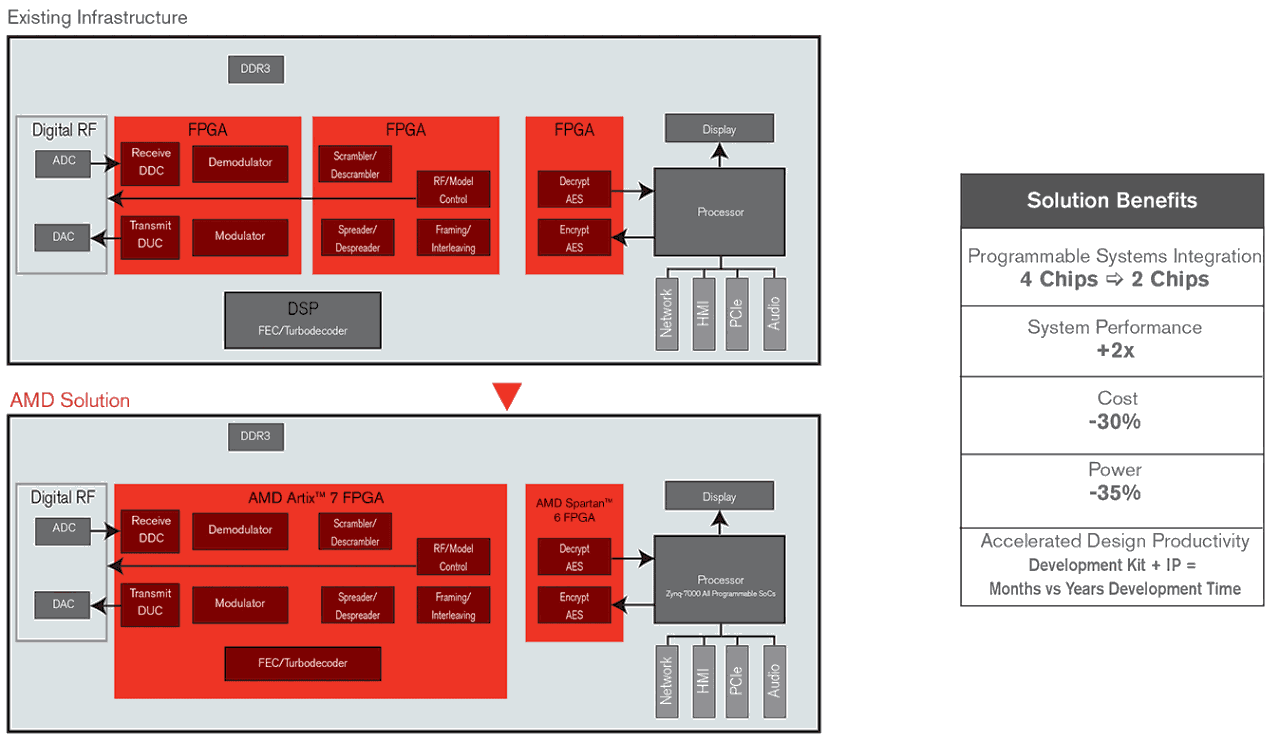Small Form Factor and Battery Powered Software Defined Radio
Advances in Software Defined Radio (SDR) have pushed to boundaries of wireless communications which has resulted in an explosion of new wireless protocols for wideband, ultra-wideband, and complex MIMO antenna configurations. The advanced high performance signal processing possible in Artix™ 7 and Kintex™ 7 programmable logic with rich DSP, dense logic, and block memory has opened up a wide range of advance wideband applications in low power portable and battery powered radio equipment in military, public safety, and private wireless networking.
But in many of these applications there is a real challenge for design engineers to meet Size, Weight, and Power (SWAP) product goals as well as the minimizing bill of material costs (SWAP-C). The Artix 7 and Spartan 6 families are targeted to solve design challenges for SWAP-C Software Defined Radio while still providing high performance signal processing and general purpose logic. The Artix 7 family provides up to 215K LC logic and 740 DSP slices in a 19 x 19 mm package. The Artix 7 family provides packaging as small as 10 x 10 mm. The Spartan™ 6 family extends beyond the low end range of Artix 7 family to provide package sizes all the way down to 8 x8 mm. The combined Artix 7 and Spartan 6 families provide high performance signal processing and logic in very small footprint packages with extremely low power consumption.
Solution Summary and Benefits
- A small form factor battery powered Software Defined Radio for handheld voice and data communications.
- Artix 7 100T/200T provide up to 740 DSP slices for high performance low power signal processing needed for advanced wideband waveforms such as OAM and OFDM modulation protocols.
- Spartan 6 device provides very small footprint and extremely low power for embedded encryption and decryption logic providing flexible and field upgradable advanced encryption engines.
- Efficient SmartCore IPTM, rich IP ecosystem, Mathworks Simulation and target development, Vivado tools for organizing complex modem designs and HLS for native C code development.
- Microblaze or Picoblaze soft processors for real time control loops needed for RF closed loop control and modem management.
